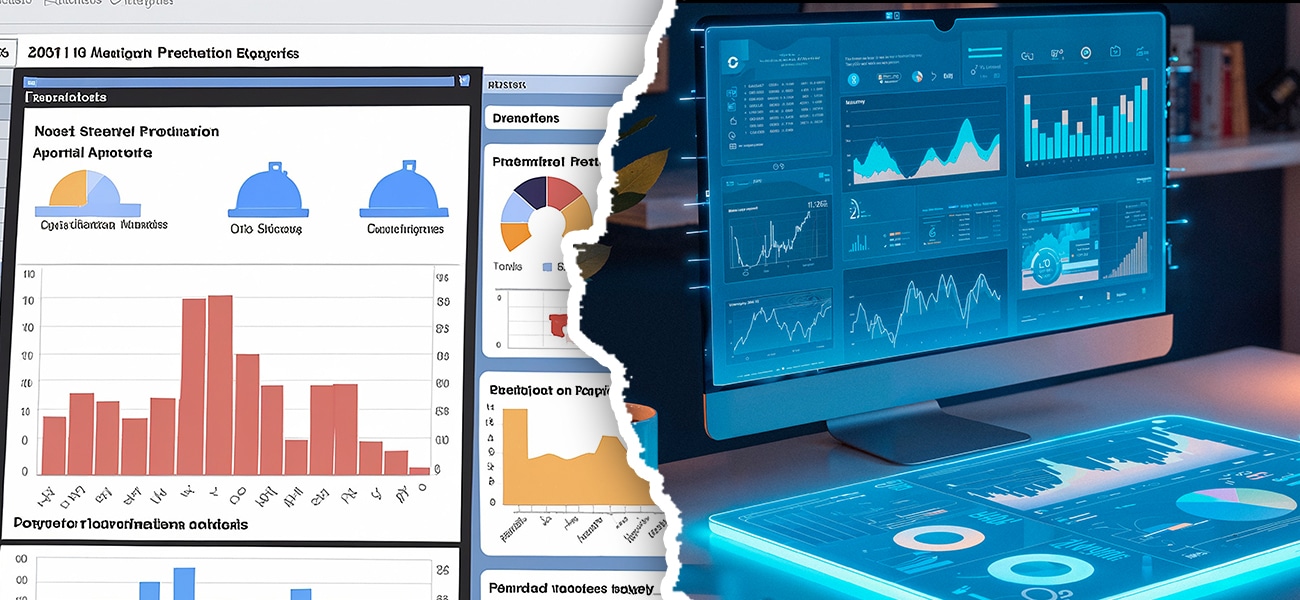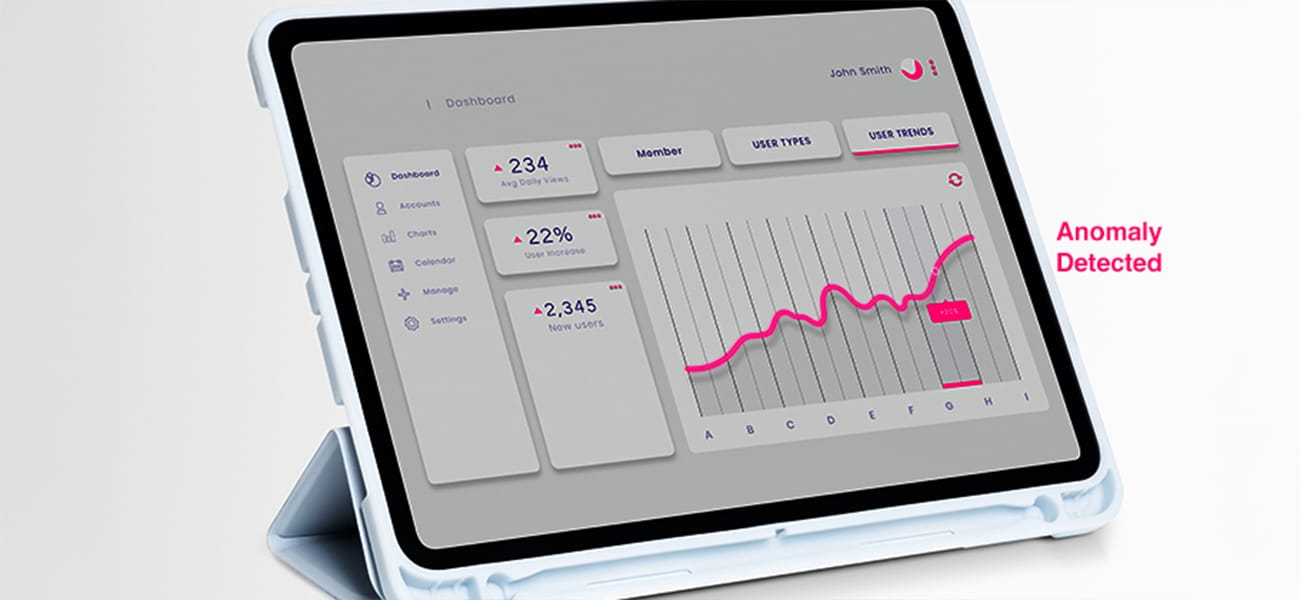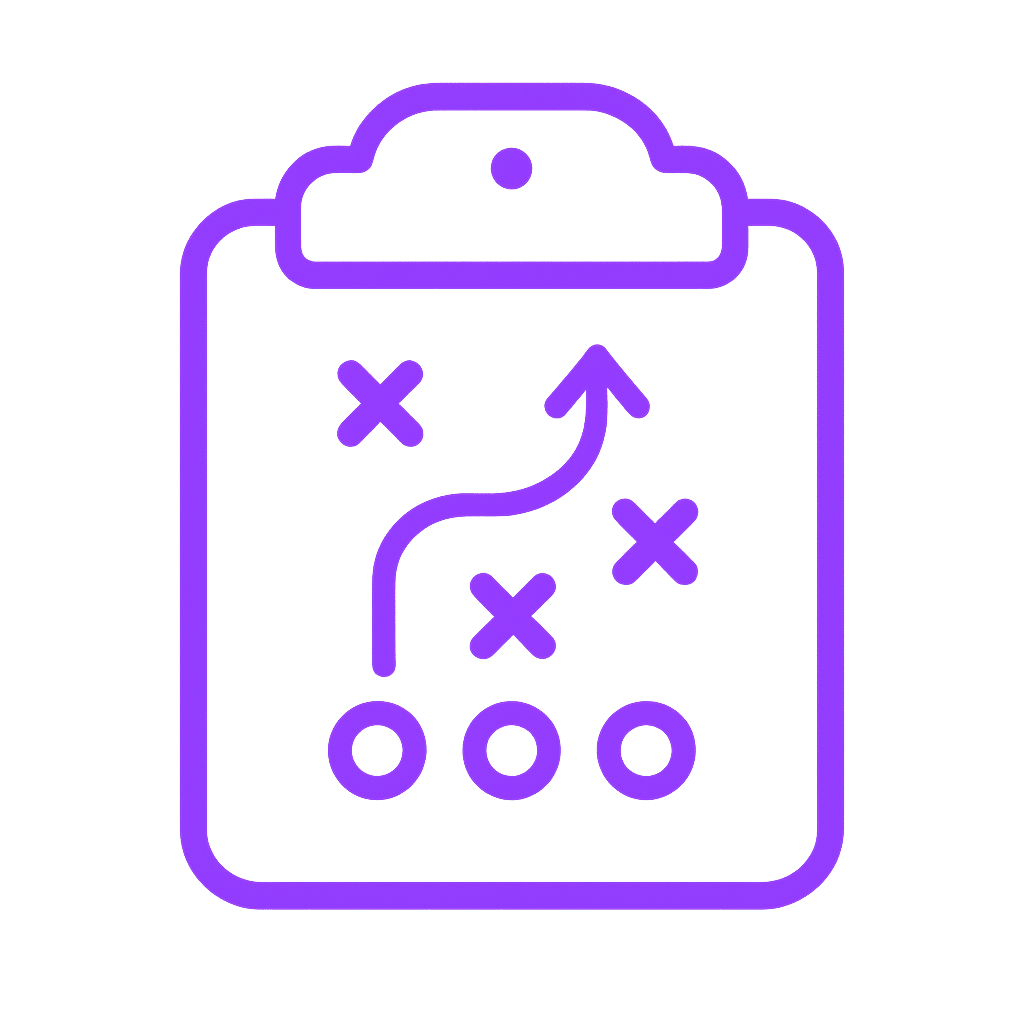
For years, businesses relied on traditional BI tools to make sense of their data, mostly looking in the rearview mirror. Analysts would dig in to generate reports and hope the insights arrived before the moment passed. It worked… until the pace of business outgrew the speed of those tools.
Now, we’re in a world that demands real-time decisions and forward-looking insights. That’s where AI Business Intelligence changes everything. Instead of just telling you what happened, AI can predict what’s coming next and even suggest what to do about it.
It automates the heavy lifting, analyzes massive amounts of data in seconds, and adapts as new information rolls in. This isn’t just a better BI system; it’s a smarter way to run your business.
Table of Contents
- Traditional Business Intelligence: Definition and Key Characteristics
- Common Characteristics of Traditional Business Intelligence
- Limitations of Traditional BI in Modern Business
- What Is AI Business Intelligence and How It Works
- How AI BI Is Reshaping Business Strategy And Growth
- Key Differences Between AI and Traditional BI
- How to Use AI in Business Intelligence
- Why More Businesses Are Adopting AI BI Solutions
- Conclusion
Traditional Business Intelligence: Definition and Key Characteristics
Traditional business intelligence is built on structured data, manual processes, and fixed reporting. It helps businesses track historical performance using dashboards and predefined queries. While it’s reliable for understanding what happened, it struggles to offer real-time insights or adapt quickly to change. As a result, decision-making can be slow and reactive rather than agile and forward-looking.
Common Characteristics of Traditional Business Intelligence
1. Manual Data Collection and Preparation

In traditional BI systems, gathering and preparing data often involves a lot of manual work. Teams may pull spreadsheets from different departments, clean and merge the data in Excel, and then upload it into reporting tools. For example, a sales manager might spend hours each week consolidating regional sales numbers just to produce a monthly performance report. This process is not only time-consuming but also increases the risk of human error.

Traditional BI relies heavily on fixed key performance indicators (KPIs) and standard reports that are created ahead of time. If a business question changes mid-quarter, it can take weeks to build a new report or dashboard. Imagine a retail company wanting to track the impact of a sudden pricing change—but their existing dashboard only shows last month’s performance. By the time a new report is built, the opportunity to pivot may have already passed.
Traditional BI tools are great at summarizing past data like how many units were sold last quarter or which region performed best. But they typically don’t explain why something happened or what might happen next. A finance team might know their expenses jumped in Q2, but without deeper AI-driven analysis, they can’t easily uncover patterns or predict future cash flow issues.
These systems often require a dedicated data analyst or IT team to run queries, interpret results, and maintain infrastructure. A marketing manager wanting to understand customer churn trends might need to submit a ticket to the BI team and wait days for the analysis. This dependency creates bottlenecks and slows decision-making, especially in fast-moving industries.
Traditional business intelligence tools, while valuable in the past, struggle to keep up with the demands of today’s fast-moving, data-driven world:
By the time insights are gathered and reports are built, the opportunity may have already passed.
Business users have to wait for data teams to update dashboards or run custom reports—slowing down decisions.
It’s great at telling you what happened, but not what’s going to happen or what you should do next.
In a world where business models pivot quickly, static dashboards and rigid data pipelines can’t keep up.
AI business intelligence is like giving your data a brain and a voice. By leveraging machine learning, natural language processing, and automation, AI-powered BI doesn’t just tell you what happened; it helps you understand why it happened and what to do next.
Instead of manually digging through static dashboards, business leaders can now get real-time answers in plain English, receive predictive insights, and even act on automated recommendations—all without needing to be data scientists.
Let’s say you’re running an eCommerce brand. Traditional BI might show you that sales dipped last month. But AI BI will alert you the moment conversion rates drop, suggest that it may be due to slow page speed, and even recommend a fix. It turns raw data into action.

Instantly flag unusual spikes or dips like a sudden drop in customer engagement, so you can act fast.
Forecast future sales, inventory needs, or customer churn with incredible accuracy.
Say goodbye to building reports from scratch. AI tools can generate visuals and summaries on the fly.
Ask “Why did revenue drop last week?” and get a clear answer. No SQL required.
The system gets smarter over time, improving recommendations and adapting to new trends.

Adopting AI Business Intelligence isn’t just about keeping up with tech trends—it’s about transforming how your business makes decisions, scales, and competes. ImpelHub’s new feature, Battleboard™, takes this a step further by enabling in-depth competitive benchmarking. This interactive, visual tool allows your team to explore and engage with competitive insights in real time. With side-by-side graphs of your business versus key competitors, you can identify strengths, gaps, and opportunities in real time.
Here’s how AI is reshaping the BI landscape:
With AI, data analysis happens in real time. Imagine getting a notification the moment customer churn spikes—no more waiting days for a report. You can make swift, data-backed decisions exactly when it matters most.

AI looks ahead, not just behind. Say you’re running a subscription business: AI can forecast churn rates and even recommend retention strategies like sending targeted offers before customers cancel.
3. Improved Accuracy
Manual reports often come with human error. AI minimizes that by continuously learning from patterns and anomalies in your data, delivering sharper, more accurate insights you can trust.
4. Scalability
As your business grows, so does your data. AI BI can seamlessly pull from CRMs, ERPs, social channels, and more—no sweat. Whether you’re a startup or an enterprise, it scales with you.
5. Greater Accessibility
You don’t need to be a data scientist to use AI BI. With natural language capabilities, your sales team can simply ask, “What’s our best-performing product this quarter?” and get instant, visual answers.

A mid-sized eCommerce company using ImpelHub, an AI-powered BI platform, reduced reporting time by 60% and increased conversion rates by acting on real-time customer behavior trends. That’s the power of turning insights into action.
Interested to know how ImpelHub makes it happen? Read it here.
Key Differences Between AI and Traditional BI
Feature | Traditional BI | AI Business Intelligence |
Data processing | Batch/Manual | Real-time/automated |
Insight type | Descriptive (what happened) | Predictive & prescriptive (what next?) |
Scalability | Limited | Highly scalable |
Use accessibility | Technical users | Non-technical users with NLP |
Adaptability | Static dashboards | Dynamic, learning systems |
Speed of decision making | Slower | Instant recommendations |
How to Use AI in Business Intelligence
Integrate Your Data Sources
Bring all your critical data—sales, marketing, operations, customer behavior—into a centralized platform. The more connected your data, the better the AI can uncover patterns and insights.
Leverage a Smart BI Platform like ImpelHub
Use an AI-powered solution like ImpelHub, which combines machine learning and human expertise to help you spot trends, predict outcomes, and make smarter business decisions faster.
Set Predictive KPIs
Go beyond historical metrics. With AI, you can track forward-looking KPIs like customer churn risk, sales forecasts, or product demand—helping you anticipate rather than react.
Automate Reports and Dashboards
Let AI handle the heavy lifting. Automatically generate dynamic dashboards and real-time reports tailored for different teams—no manual work needed.
Act on Real-Time Recommendations
Use AI-driven suggestions to tweak campaigns, adjust inventory, or optimize workflows—turning insights into immediate, impactful action.
Why More Businesses Are Adopting AI BI Solutions
Fully Automated Workflows
Imagine a retail chain like Target automatically analyzing daily sales, restocking inventory based on predicted demand, and sending alerts when anomalies arise—all without human input. AI-powered BI handles data ingestion, cleansing, analysis, and insight delivery on autopilot.
Voice and Text Query Enabled

Think of your BI tool like Siri or Alexa for business data. A sales manager at a logistics firm can say, “What were our top-selling SKUs last month in the Midwest?” and get an instant answer—no SQL or dashboard drilling required. Tools like Power BI with Copilot or ImpelHub enable natural language queries, breaking down barriers for non-technical users.
Predictive and Prescriptive Insights
Instead of just knowing that Q1 revenue dropped, AI BI platforms like ImpelHub can analyze historical trends, flag early warning signs, and suggest corrective actions—such as shifting marketing spend or adjusting pricing to offset expected dips in customer demand.
Cross-Functional Integration
Modern BI is moving beyond siloed reporting. For example, a SaaS company could connect data from CRM, email campaigns, support tickets, and billing software into one AI-driven BI platform. This allows marketing to adjust campaigns based on churn patterns or product teams to prioritize features linked to higher retention.
Democratized Access
Companies like HubSpot or Shopify are equipping every employee, from the CX intern to the CFO with dashboards powered by AI that surface real-time KPIs. No more waiting days for analysts to build custom reports. Everyone gets self-serve access to insights they can act on.
Conclusion
Traditional BI served us well, but in today’s digital-first, data-saturated environment, it’s no longer enough. AI Business Intelligence represents the next frontier of strategic decision-making. By automating analysis, predicting trends, and personalizing insights, AI is transforming BI into a powerhouse for growth.
Want to move beyond reporting to real-time, AI-powered decisions? Explore how platforms like ImpelHub can help.



